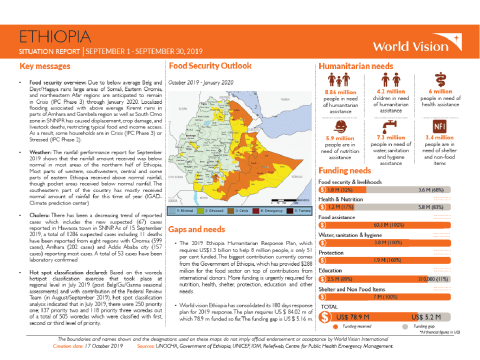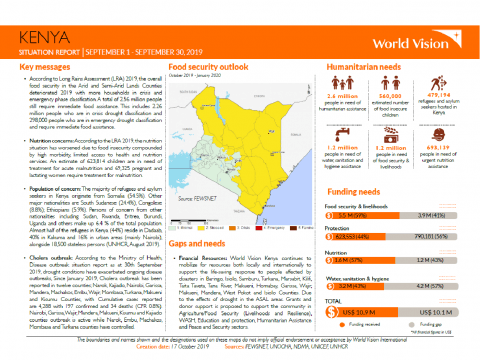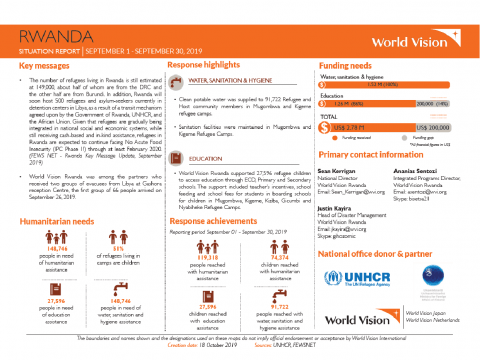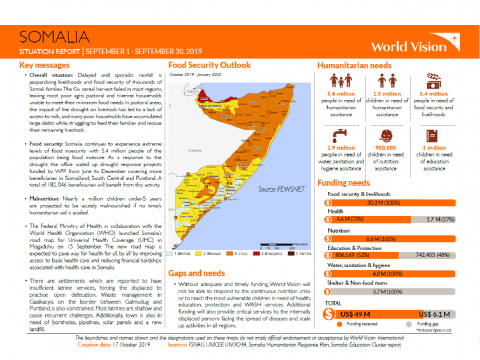East Africa Region - September 2019 Situation Report
Download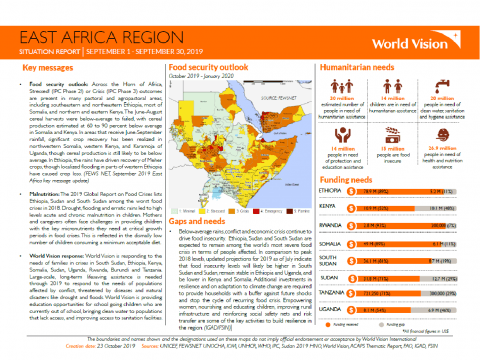
- Food security outlook: Across the Horn of Africa, Stressed! (IPC Phase 2!) or Crisis (IPC Phase 3) outcomes are present in many pastoral and agropastoral areas, including southeastern and northeastern Ethiopia, most of Somalia, and northern and eastern Kenya. The June-August cereal harvests were below-average to failed, with cereal production estimated at 60 to 90 percent below average in Somalia and Kenya. In areas that receive June-September rainfall, significant crop recovery has been realized in northwestern Somalia, western Kenya, and Karamoja of Uganda, though cereal production is still likely to be below average. In Ethiopia, the rains have driven recovery of Meher crops, though localized flooding in parts of western Ethiopia has caused crop loss. (FEWS NET, September 2019 East Africa key message update)
- Malnutrition: The 2019 Global Report on Food Crises lists Ethiopia, Sudan and South Sudan among the worst food crises in 2018. Drought, flooding and erratic rains led to high levels of acute and chronic malnutrition in children. Mothers and caregivers often face challenges in providing children with the key micronutrients they need at critical growth periods in food crises. This is reflected in the dismally low number of children consuming a minimum acceptable diet.
- Below-average rains, conflict and economic crisis continue to drive food insecurity. Ethiopia, Sudan and South Sudan are expected to remain among the world’s most severe food crisis in terms of people affected. In comparison to peak 2018 levels, updated projections for 2019 as of July indicate that food insecurity levels will likely be higher in South Sudan and Sudan, remain stable in Ethiopia and Uganda and be lower in Kenya and Somalia. Additional investments in resilience and on adaptation to climate change are required to provide households with a buffer against future shocks and stop the cycle of recurring food crises. Empowering women, nourishing and educating children, improving rural infrastructure and reinforcing social safety nets and risk transfer are some of the key activities to build resilience in the region. (IGAD/FSIN)
- World Vision response: World Vision is responding to the needs of families in crises in South Sudan, Ethiopia, Kenya, Somalia, Sudan, Uganda, Rwanda, Burundi and Tanzania. Large-scale, long-term life-saving assistance is needed through 2019 to respond to the needs of populations affected by conflict, threatened by diseases and natural disasters like drought and floods. World Vision is providing education opportunities for school going children who are currently out of school, bringing clean water to populations that lack access, and improving access to sanitation facilities.
Share
